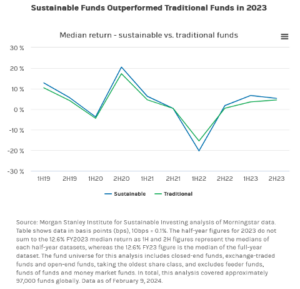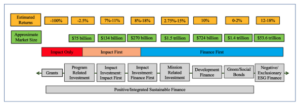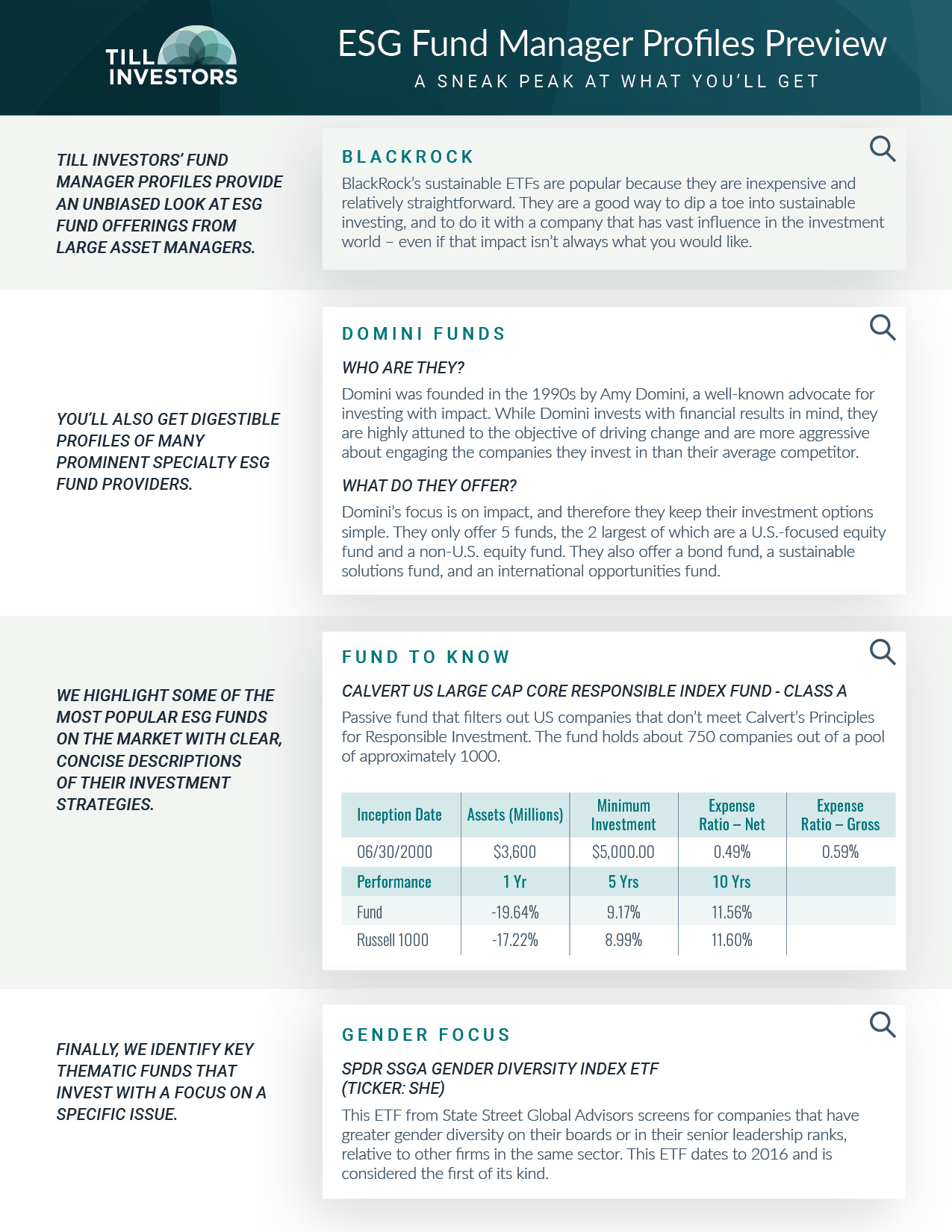A Deeper Dive on “Giving Up Returns”

Sustainable investors often believe they have to give up returns to invest their values. Do they?
One of the most enduring myths about sustainable investing is that sustainable businesses don’t make money. So if you want to invest sustainably, be prepared to give up returns.
It’s a curious concept, first and foremost because it is in fact a myth. Broadly speaking, sustainable investments perform pretty similarly to traditional investments. If there is a difference, the data shows that sustainable strategies are the ones most likely to outperform, over the long term.
Yet when we at Till Investors talk with sustainability-curious investors, their first question is almost always about what they will have to sacrifice. I want to dive into this question a bit deeper and share a framework that provides some useful perspective around balancing returns and values.
The Myth Reexamined
Let’s leave aside the curious ramifications of a worldview in which ethical, sustainable behavior is unacceptable where money is involved. Let’s just look at the facts.
Research data shows over and over again that sustainable investments perform as well as, or better than, traditional investments, particularly over time. This latest dataset from Morgan Stanley focuses on 2023 year end data, and its findings are very much in keeping with studies that have come before. Not a few studies – literally thousands.

So why does the underperformance myth persist? There are a handful of practical or situational reasons you can point to that muddy the picture for potential sustainable investors.
- A large percentage of sustainable investment strategies hold almost no traditional oil and gas companies. When that sector outperforms, sustainable funds can be badly beaten in a way that draws a lot of attention.
- Many of the best-known sustainable funds focus on a sustainability theme, such as alternative energy or women-owned/-led businesses. Funds with a narrow focus tend to perform very differently from the market as a whole, making it hard to compare results.
- While it is improving, company sustainability data is still pretty inconsistent. That means there are different ideas about what constitutes a sustainable company, and that in turn means that sustainable indexes aren’t all that great as performance benchmarks.
Beyond the practicalities, there’s a perception issue at play – people broadly expect sustainable investments to have worse returns than traditional strategies. Perhaps that’s because they associate sustainable strategies with charity. Maybe it’s because they view sustainable businesses as being less competitive, or less focused on financial gain, despite evidence to the contrary.
Whatever the source of this myth, it’s been damned hard to shake. And that’s left investors feeling hesitant about sustainability strategies and unsure how to use them.
A Different Framework
Individual investors aren’t the only ones troubled by these uncertainties. Large institutional investors feel them keenly too. This is particularly true of charities, faith-based organizations, foundations, and non-profits – organizations that want to grow their financial resources to accomplish as much good as possible.
This was brought home to me recently when I worked with a faith-based organization called FaithInvest (and their financial partner NEPC) to develop a guide around incorporating faith values into long-term financial management plans. Faith institutions have challenging financial demands they must meet to take care of their people and support their programs. But they also face intense pressure to ensure their financial investments properly reflect their faith values.
The FaithInvest team relied on a rubric designed by researchers at Oxford University’s Said Business School to frame the discussion.
The Sustainable Investing Spectrum: Market Sizes and Estimated Returns

This graphic was designed with institutional investors in mind. Its performance data and investment options reflect public investments that are available to everyone as well as private investments that are only available to institutions. Still, I found it a very effective tool for understanding the dynamic between impact and performance.
There’s a lot going on here, so let me break down the key points.
- It’s not performance vs impact. You don’t have to choose between only caring about financial performance, or only caring about sustainability and impact. There are a lot of strategies in between that provide a balance between pursuing gains and sustainability.
- Sustainable investing is prominent and diverse. The overall market size of sustainable investment activity is in the trillions, being spread across numerous types and styles of sustainable investing strategies.
- There are many ways to meet your financial goals. The gray boxes under the “finance first” portion of the graphic show that there is a wide range of values-oriented strategies prioritizing performance.
- Returns are comparable to traditional investments. For example: based on historical performance, “green/social bonds” have a return range of 0%-2%. Meanwhile, the 10-year average annual return for the Bloomberg US Aggregate Bond Index, through May 31, is 1.33%.
- Performance has been negative primarily if you’re intentionally giving money away. That’s a factor for faith-based institutions, charities, and other non-profits. Individuals can stick to sustainable investments where historical long-term performance has been positive.
Individual investors don’t have the same types of investment options that institutions have at their disposal. But with sustainable mutual funds and ETFs numbering in the hundreds, and more sustainability products being offered all the time, there is still a wide range of options for incorporating sustainability values into your financial plan without sacrificing your financial goals. That starts with believing that you can.


